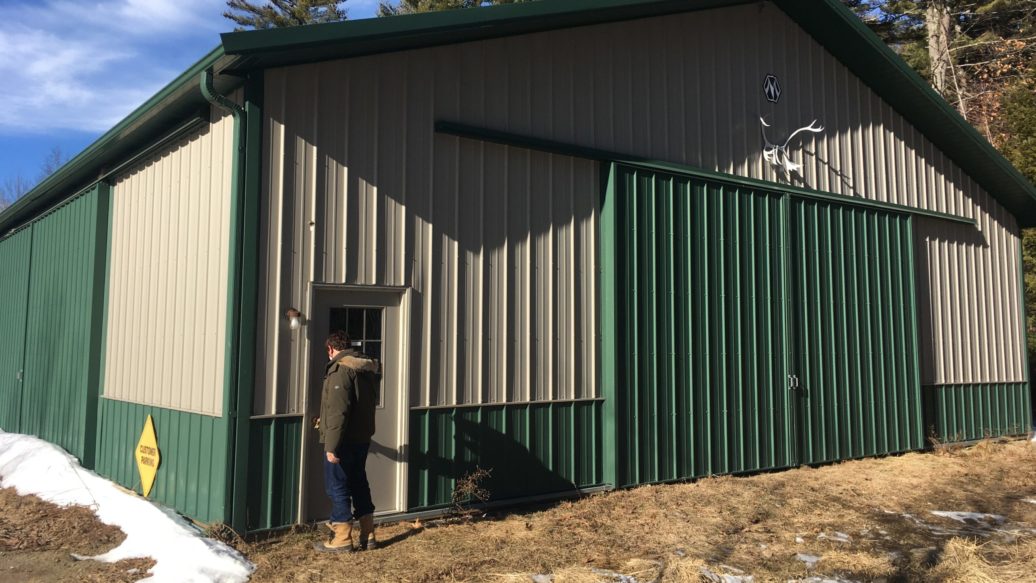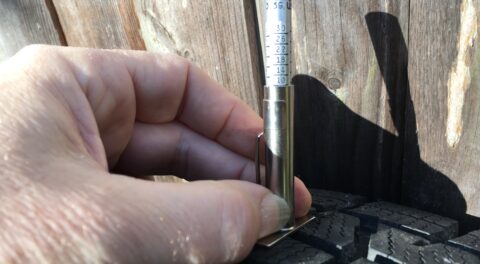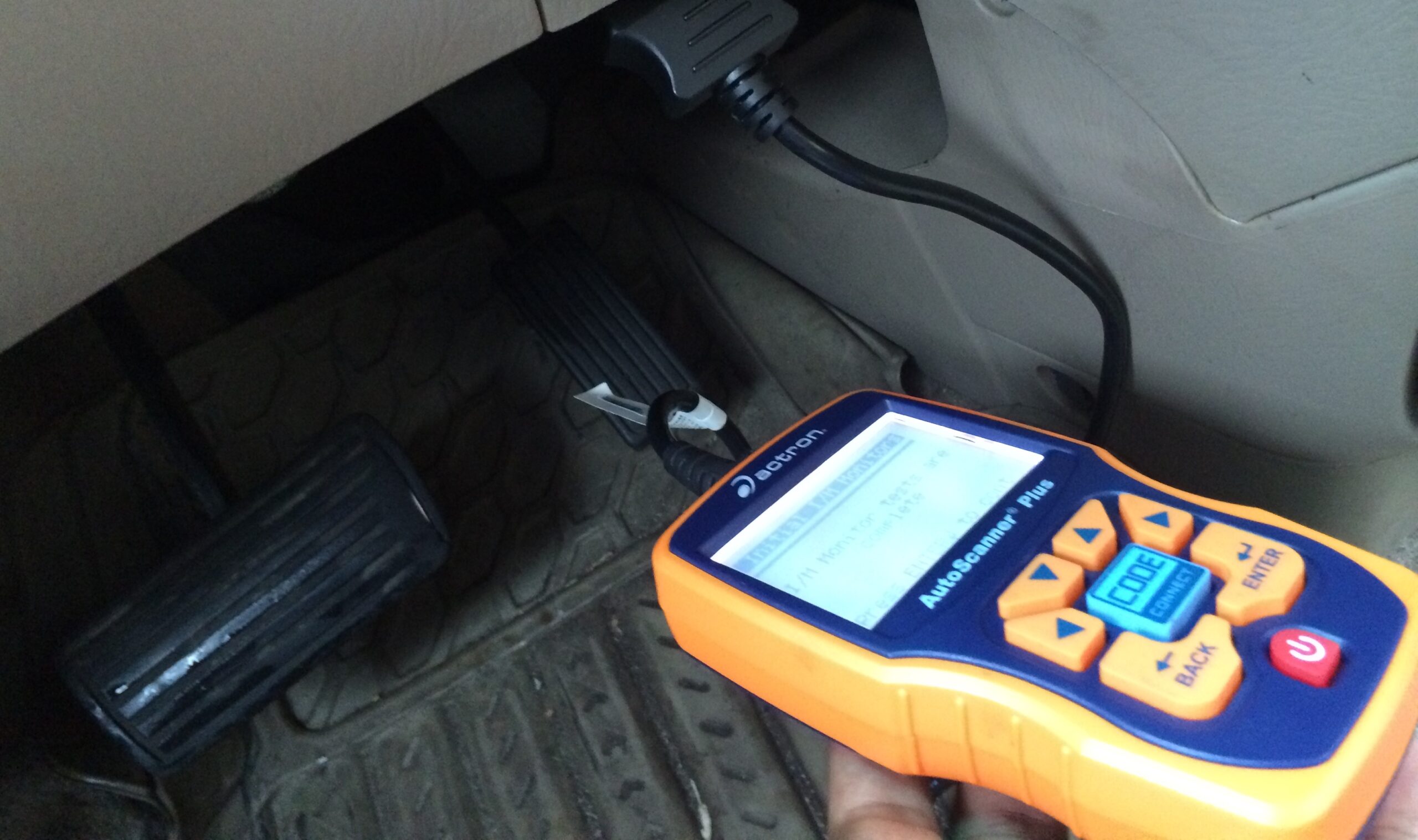In those wonderful carefree pre-pandemic days, whenever Maire Anne and I would visit friends in western Massachusetts or southern Vermont, we’d breathe in the air, take in the views, and instinctively feel that we should be out in the country for the next phase of our lives. But there was a hitch: While I can fix cars and write from anywhere, the hard-won client base of her business (“Bugworks”) doing insect-related hands-on in-classroom educational programs in elementary schools, libraries, and museums was inextricably centered around Boston.
The pandemic, however, put a stake through the heart of her business—obviously no one is hiring in-class enrichment educators right now. So in one of those change-creates-opportunity scenarios, we find ourselves entertaining the possibility of moving.
Now, we love living in Newton, Massachusetts, one of the safest cities in the country with grade-A public schools. There’s not a lot to complain about in Newton; it’s been a great place to raise kids. But we’ve now been here for 30 years, and as I’ve written repeatedly, it’s a challenging place in which to accumulate cars.
I had my three-cars-easy-or-four-in-a-squeeze garage built in 2005. Then, as the number of cars ratcheted up, eventually I rented four garage spaces out in central Massachusetts. Now all my spaces are beyond full, and I’ve borrowed two over-winter spaces from a friend.
I could pare down the fleet, but where’s the fun in that? Why not use this as an opportunity to do what many people have recommended over the years and find a place in the country with a big outbuilding for the cars? The house is nearly paid off, its value is high, and we should be able to roll that into buying the dream, right? Hell, we deserve that, right? I don’t see us leaving the Northeast, but there’s a lot of Northeast outside Boston.
Unfortunately, it’s not that easy to find garage-centric properties. A friend turned me onto CarProperty.com, but most of the listings were badly out of date. Hemmings also has a real-estate section, but it’s kind of thin. So I gravitated toward Zillow; I found it the easiest of the online real estate search tools to use to rapidly look at large numbers of properties.
Unfortunately, none of the search engines like Zillow or Realtor.com have database checkboxes for “buyer is a car nut and looking for a car-centric property.” Zillow inexplicably allows you to specify the number of desired parking spots, but not number of garage spaces; there’s just a single checkbox for “garage.” Coldwell Banker’s website allows you to check up to “5+” garage spaces, but unlike Zillow, it doesn’t allow you to search an entire state; instead, it requires that you to select a town or a zip code. Besides, I didn’t really want something where the car storage was part of the square footage of the house, as that was likely to be either a pumped-up McMansion (not our style) or a multi-million dollar estate (not our budget).
So instead of checking off “garage,” I wound up having to use keyword search terms, and that simply doesn’t work very well. In the first place, even though there is a mystique about “barn-find” cars (and I’ve long said that putting a car in a barn is preferable to leaving it outside, dust and rodents notwithstanding), if you’re going to the trouble to look for a property and move there, barns really aren’t the go-to automotive storage form factor. If they’re horse barns, they’re divided into stalls, which is the antithesis of the kind of open space you want. If they’re big horse arenas, they have dirt floors. It’s not impossible to find a two-story barn built on a gentle slope where the first floor has a cement floor and the second is structurally sound enough to support cars, but that’s a pretty small subset.
What I really wanted was a house with a reasonable attached garage and a large but simple metal building; that way the building isn’t part of the square footage of a bloated house. But I rapidly found that if you search for “outbuilding,” Zillow and other tools show you everything where that term is used to refer to a shed that holds trash barrels or a canoe.
Also, since the keyword matching on these search engines is exact, “metal building” and “metal outbuilding” return different results. Searching for “car collection” or “car collector” sometimes bore fruit, but again, if the listing said “car collectors” instead of “collector,” you’d miss it. Plus, many listings would show a photo of a barn or outbuilding but include absolutely no mention of it in the description. The idea that folks like me want details on the outbuilding seems to be totally lost on many listing agents.
Much of what I found wasn’t worth seeing, but it was great nightly fodder for Facebook. Oh, look: Here’s an inexpensive house on a busy road in White River Junction that comes with a storage business with over 40 individual roll-up doors. Here’s one in upstate New York that has an airstrip and a hangar for a small plane. Here’s one in northern Vermont where the property has no house, a long barn, a long metal building with a small apartment in the back that would cause Maire Anne to divorce me, and a manure pit—but on the positive side, you could literally fly a paper airplane from there into Canada.
I did, however, stumble into this absolutely insane property in Tamworth, New Hamphire,with a “car barn” that reportedly held up to a hundred cars, but clearly you’re paying a huge premium for the “car barn,” and the million-dollar price tag is too steep unless I want to start a business serving clients of nearby Club Motorsports. It was like after saying “more cowbell” for weeks I was forced to say “okay, waaaay too much cowbell!”
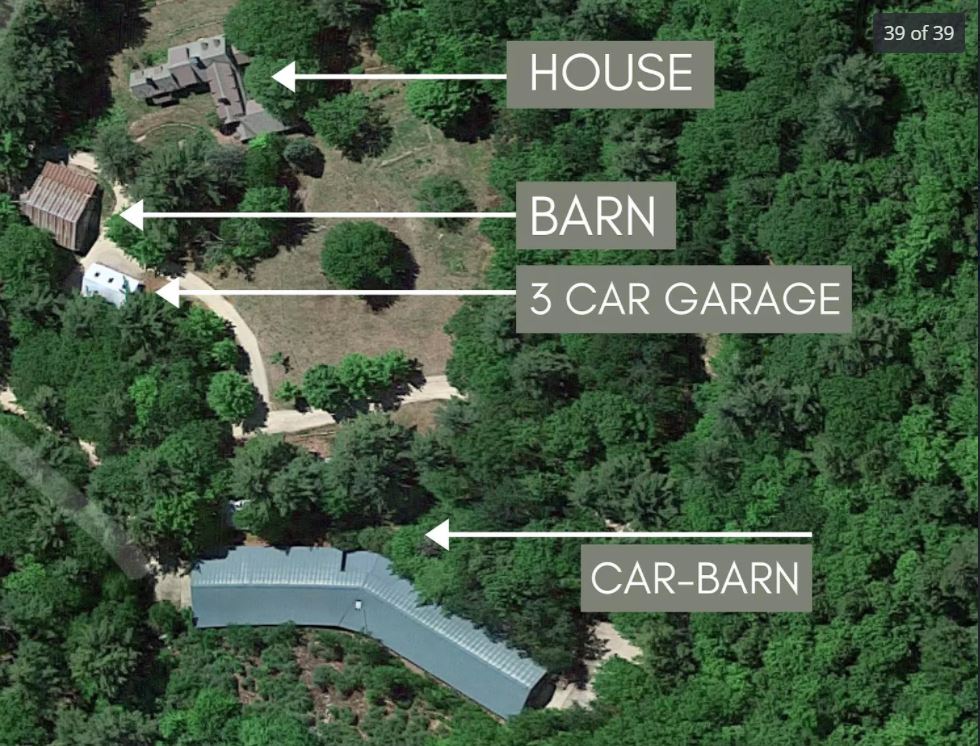
A car enthusiast’s dream property.
Now, anyone who has moved or considered moving knows that everything above is just plain silly, because I’ve said nothing about the house, the surrounding property, or the town. I joke that I could live in a trailer next to a big metal building, but it is just a joke—I enjoy nice interior living spaces as much as the next person, and fortunately my tastes and Maire Anne’s are remarkably similar. We did, in fact, do what you’re supposed to do and sit down together and write up a list of what we were looking for.
We didn’t want a farm.
We didn’t want to run a B&B.
We wanted a mid-sized house that’s thrilling, with high ceilings and exposed wood, unfussy modern/contemporary preferred over Victorian or statelystyles , three or more bedrooms, plus an office for me and a quilting space for her, a modern-looking kitchen (not a “country kitchen”), and windows and a porch that look out onto mountains or water.
And no chandeliers. We hate those.
And storage space for at least fifteen cars. (Hey, there are twelve now; that’s reasonable, right?)
And affordable.
And within a 2.5-hour drive of Boston.
Yeah, it’s the kind of list of requirements that would make any real-estate agent roll their eyes and say, “Oh, crap, not more of these people. I bet they ask for dressing on the side of their salads and a slice of lemon, but it’s got to be organic lemon.”
We did find a listing for a place up in Lancaster, New Hampshire, north of the White Mountains, with a decent-looking house with a killer view, and a huge second building that had been an animal-rehabilitation facility and had drive-in access on two floors. Of all the places I’d saved in Zillow, this one looked interesting enough that I contacted the listing agent to arrange a tour.
When he asked me if I’d be ready to move quickly if we liked it, my preternatural honesty gene kicked in, and I truthfully answered no. To my surprise, he politely declined to schedule a tour, explaining that it likely would be sold within the week due to the insane amount of interest in northern properties from people with cash looking to escape the cities. I was stunned, but he then spent 45 minutes with me on the phone advising me on what my steps I needed to take in order to be ready to pull the trigger on something. Sure enough, in a few days, the listing changed to “sold.”
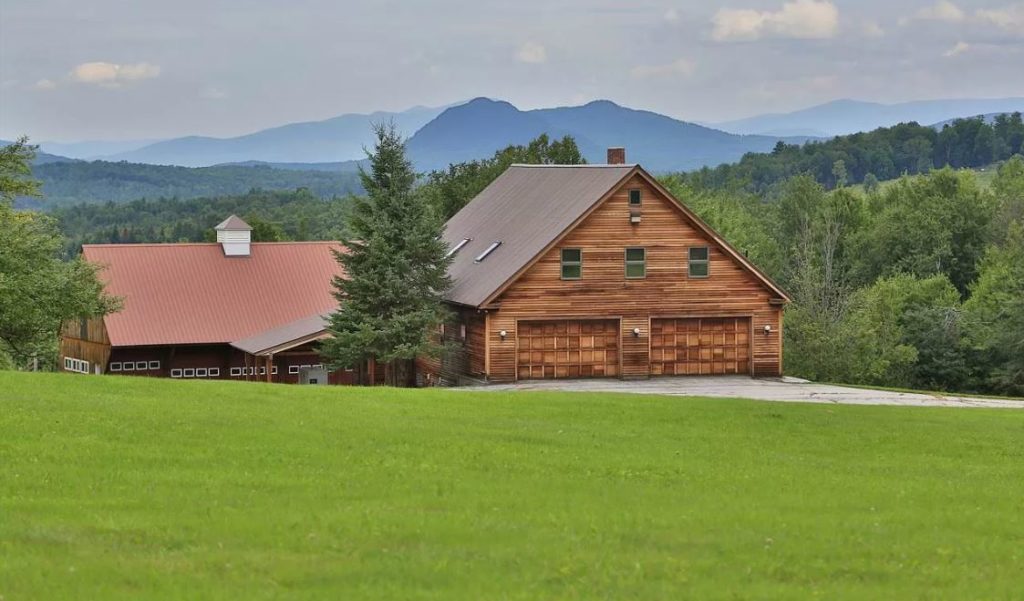
This was just the work building of the Lancaster property. The house was a similar size.
We actually did visit one property in central Massachusetts, right on the New Hampshire border, that appeared on Zillow and had an open house the following day. On paper, it sounded perfect: a good-size rambling old farmhouse with attached barn, the basement of which had three garage spaces. There was a separate 80-by-40-foot metal outbuilding and over 60 acres of land, most of which was classified as timberland, so the per-acre tax rate was extremely low. As a bonus, out on the timberland was a cool little off-the-grid hunting cabin. The entire property was well-priced, but it was being sold as-is as part of an estate settlement. It was the only place for which we dropped everything and drove out for a look.
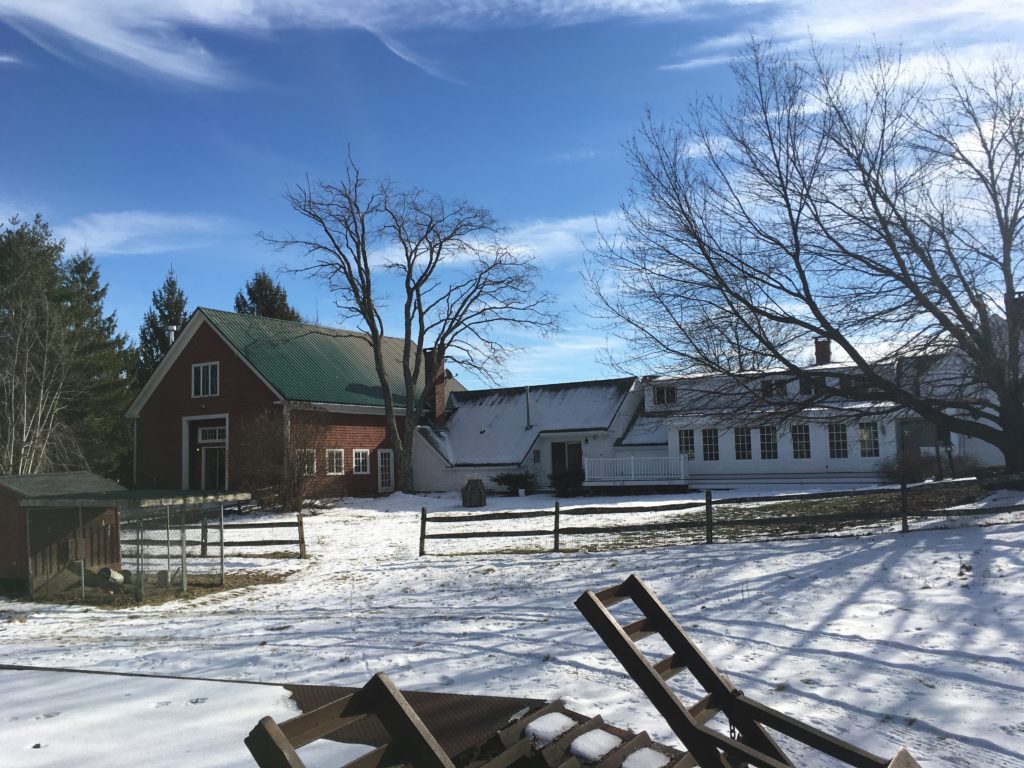
From the outside, the house and attached barn looked cool.
It turned out that the deceased owner was into vintage trucks. There were still two left in the outbuilding, and an engine on a stand in the under-barn.
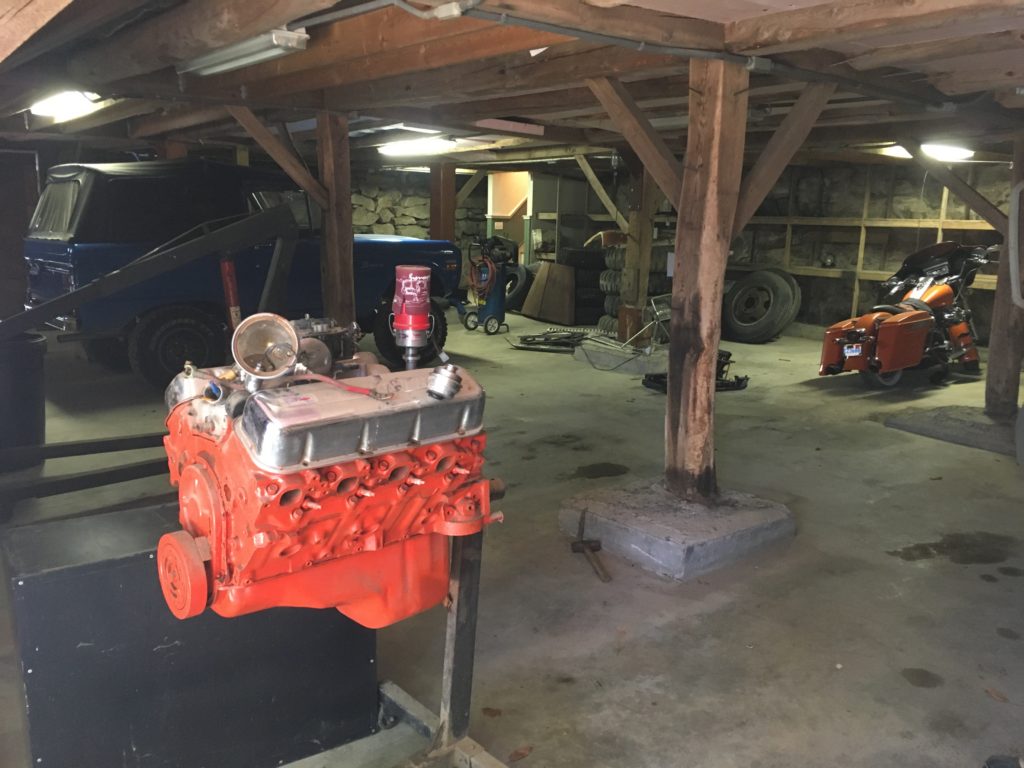
The under-barn garage space had some ghosts in it. No, neither the bike nor the Bronco came with the property, but I believe the orange V8 and the engine stand and host did. No, there wasn’t a lift.
The rest of the barn, though, showed why barns aren’t a great fit for car storage. This one was warm-feeling and charming, but with the horse stalls still intact, it certainly wasn’t a place into which you could pack cars.
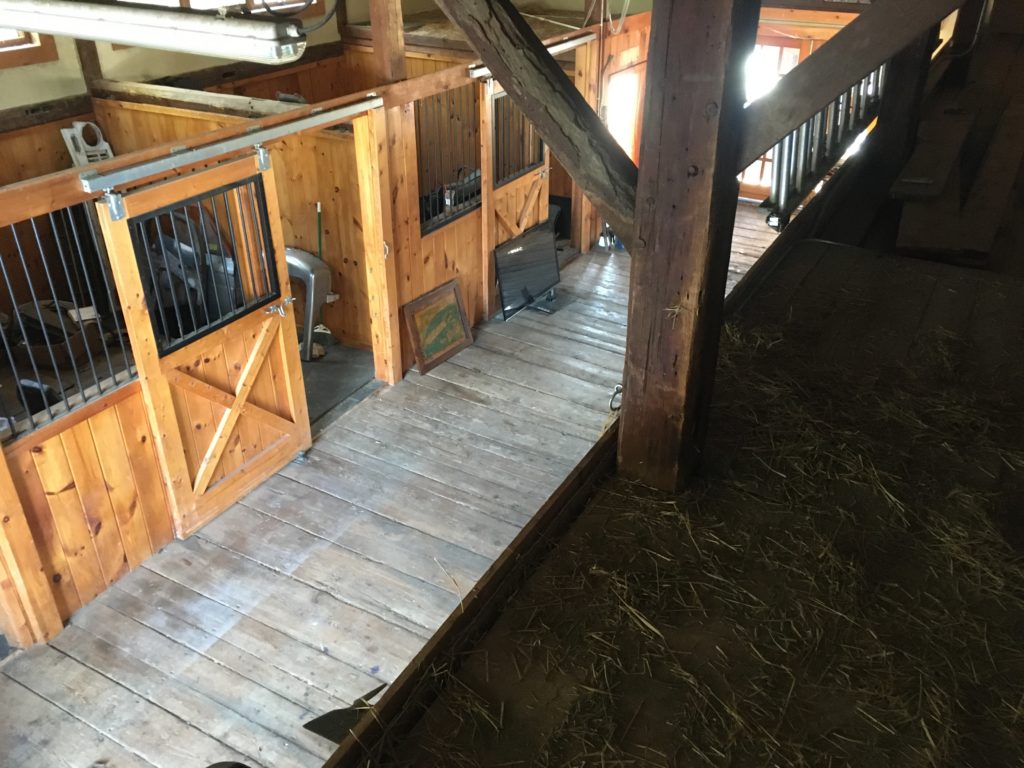
Not useful car-centric space.
The outbuilding, however, was perfect. It was exactly what I wanted.
I’d assumed that since the property was classified as timberland, it was built to hold logging equipment, but the realtor told me that the owner had built it to house his collection of vintage trucks—in fact, the realtor said he’d bought one of the cool old military trucks from the estate himself.
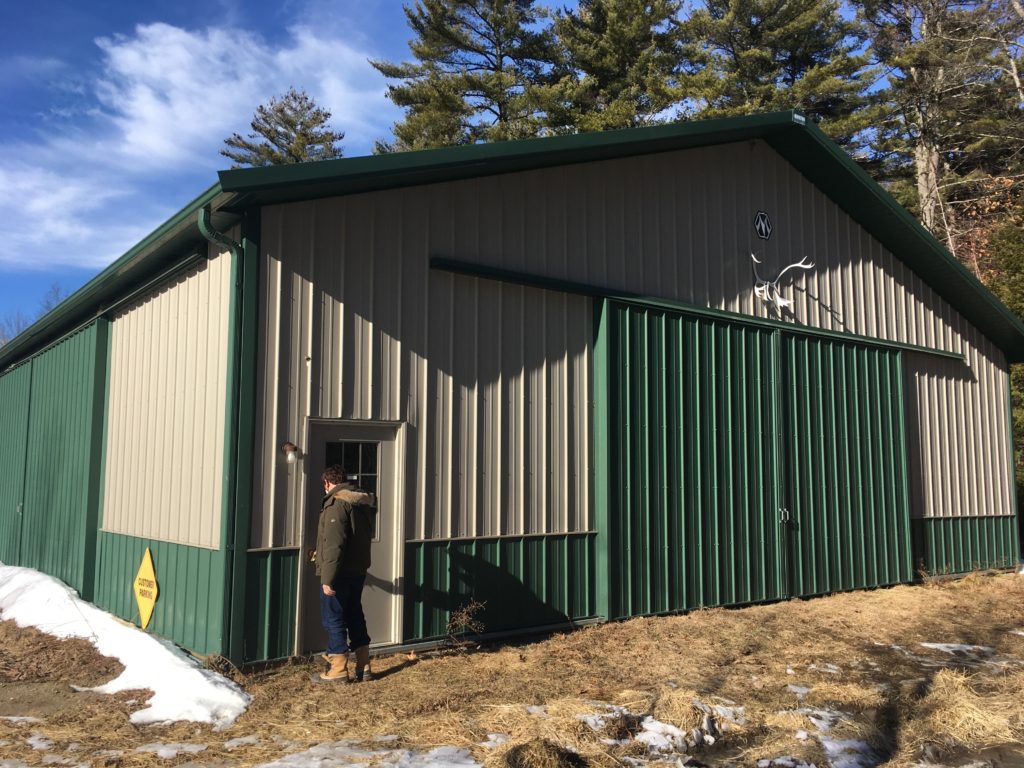
I had immediate and serious lust for the 80-by-40-foot metal outbuilding. If nothing else, walking inside it showed me that the dimensions were Goldilocks-just-right, neither obviously way to big nor something I’d clearly outgrow with a couple of purchases.
The problem was the house itself. It was so odd and dark that neither Maire Anne nor I could picture ourselves living there, and the “as is” terms of the sale threatened to make it a money pit. If there had been a spectacular view, we would’ve had something to engage our right brains, but there wasn’t, so it was a cut-and-dried left-brain decision: No.
The property sold a few days later. Oddly, I didn’t regret it. As I said to Maire Anne, as much as I love my cars and would love to have a big building on the property to hold them all, I’m not going to live in the building—I’m going to live in the house.
So I flipped the search completely around, took car storage out of the picture temporarily, and began pounding on Zillow for houses where both the house and the view were downright dream-house-level thrilling, figuring that if the property was large enough, a metal outbuilding could be added at reasonable cost. I rapidly found that the cost of my definition of “dream-house-level thrilling” (post-and-beam construction, high ceilings, wall of windows, and porch overlooking mountains or water) was about $900,000, and that if it was substantially less, the property was usually in the middle of nowhere. (Also, FYI, once you wander into Candyland, start looking at places on the Downeast Maine coast with 180-degree ocean views like this, sink into its narcotic grasp, abandon all practicality, and instead say, “I don’t need no stinking back 40 to build a garage; hell, with a view like this, I can just sit and stare out the window all day every day,” it’s really hard to bring yourself back to reality. I’m just beginning to taste my food again.)
Although the “look for the house and the view and then build the garage” model has merit, it’s not a slam-dunk. Using on-line metal-building estimation tools like this one, I estimated the cost of a 50-by-80-foot steel building, including purchase and delivery of the structure, doors and windows, pouring the slab, and construction at about $53,000, and noted that this doesn’t include clearing trees and grading the area, electrical service, heat, or an asphalt driveway leading to it. I asked my friend Alex, who built my garage, to give me a back-of-the-envelope calculation for a 50-by-80-foot metal building in New England, and he came up with $85,000. While that wouldn’t be out of the question if we found the right property, the listings I found for killer houses with killer views we could afford were generally in remote areas, so that when I emailed them to friends in Vermont for advice, the reply was usually something like, “Whoa, do you know anyone up there?”
Interestingly, it was our own David Rose, Vermont resident, founder of Hitting Redline LLC, and BimmerLife author (and by utter coincidence childhood friend of the daughter of our longtime friends in Manchester, Vermont, whose house was the seed for our potential northward migration) who gave me the talking-to I needed, basically telling me to stop looking for “the one” (the unicorn combination of house-garage-property-view) and instead figure out where we want to live, which is a combination of proximity to family and old friends (e.g., Boston), closeness to civilization and medical centers, amount of cold and winter isolation we really want to tolerate, and whether the vibe of a town is our vibe. Of course, Maire Anne and I knew this, but it needed to be said.
The fundamental problem, I realized, is that we can go on Zillow for twenty minutes at a time in the evening and look at properties, whereas we can’t tool around different parts of Vermont for twenty minutes at a time in the evening to see if its vibe fits us, and due to a combination of winter and the pandemic, that’s not an easily solvable problem in the short term. It would be easier if we could take multi-day trips to different areas to check them out, but I’m not sure I see that happening in the short term.
Then we stumbled across this interesting listing in Auburn, Massachusetts (just south of Worcester). The house and the attached barn, although they looked old, were actually of recent construction, built only about 30 years ago. The house was the right size, and very cool inside, and the attached two-level barn was built to hold cars, with room for four on each level. In addition, there was a separate three-car garage. It lacked the view or way-out-in-the-country feeling we craved, but it was interesting enough that I contacted the listing agent.
Unfortunately, the agent said that so did another car guy, and he bought it before we could see it in the flesh.
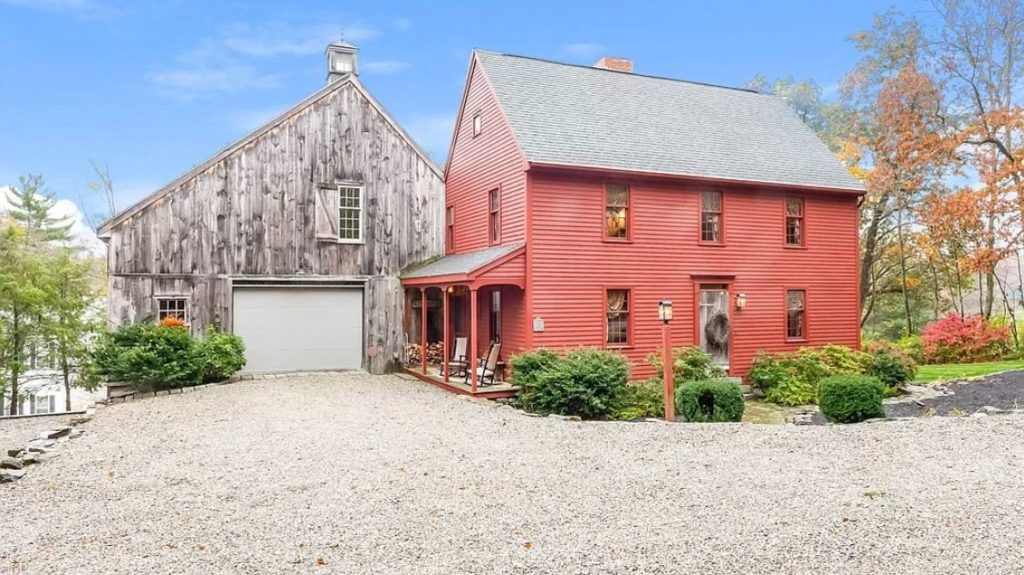
This looked quite interesting.
I’ll probably keep using Zillow the way many folks use Bring a Trailer, which is as a look-lust-and-learn tool. It’s gratifying to me to know that if we see something we think really pushes all of our buttons, we are capable of taking action, whether that’s contacting the realtor (for whom I would probably dial the honesty knob down a bit next time) or showing up for the open house. The house here in Newton needs shingles and paint and a thousand small things, so lining that up for spring would be smart. Hopefully, come spring, we’ll be vaccinated and will feel more comfortable taking overnight trips, at which point it would be a natural to exercise the fun cars and see how they feel about relocation.
After all, if I’m going to all this work to look for garage space, I might as well admit that they are members of the family, so they also get a say.—Rob Siegel
Rob’s latest book, The Lotus Chronicles: One man’s sordid tale of passion and madness resurrecting a 40-year-dead Lotus Europa Twin Cam Special, is now available here on Amazon. Signed copies of this and his other books can be ordered directly from Rob here.

